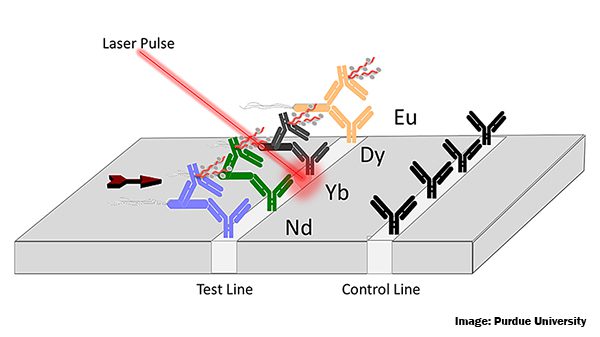New technology for pathogen detection driven by lasers
Published on by Water Network Research, Official research team of The Water Network in Academic
PRESS RELEASE: WEST LAFAYETTE, Ind. – Researchers at Purdue University have been working to develop new technologies to help stop the spread of foodborne illnesses, which kill 3,000 people a year, by detecting them more efficiently. They have developed a lanthanide-based assay coupled with a laser that can be used to detect toxins and pathogenic E. coli in food samples, water and a variety of industrial materials.
The two key features of the new technology are the incorporation of lanthanides and simple lateral flow paper-based assays. The Purdue team created a method for combining different heavy metals that when linked to antibodies can detect multiple agents in a single analysis. The Purdue team’s work is published in the January edition of Analytical and Bioanalytical Chemistry.
“Our goal was to incorporate easily detectable elements into a paper-based assay which is low-cost and effective,” said J. Paul Robinson, the SVM Professor of Cytomics in Purdue’s College of Veterinary Medicine and a professor of biomedical engineering in Purdue’s College of Engineering. “Designing a technology that is both low-cost but also accurate and can detect multiple antigens simultaneously was a critical factor in our decision to work on this problem.”
The innovators worked with the Purdue Research Foundation Office of Technology Commercialization to patent the technology in the United States and in Europe. They are looking for partners. For more information, contact Dipak Narula of OTC at dnarula@prf.org and reference track code 2019-ROBI-68413.
Media
Taxonomy
- Pathogen Removal
- Waterborne Pathogens
1 Comment
-
Where could I get more info on this? Who are the researchers?
